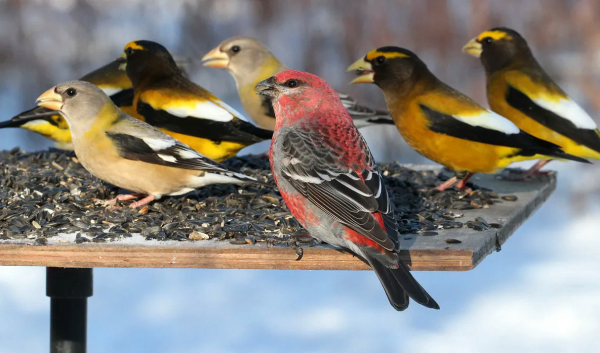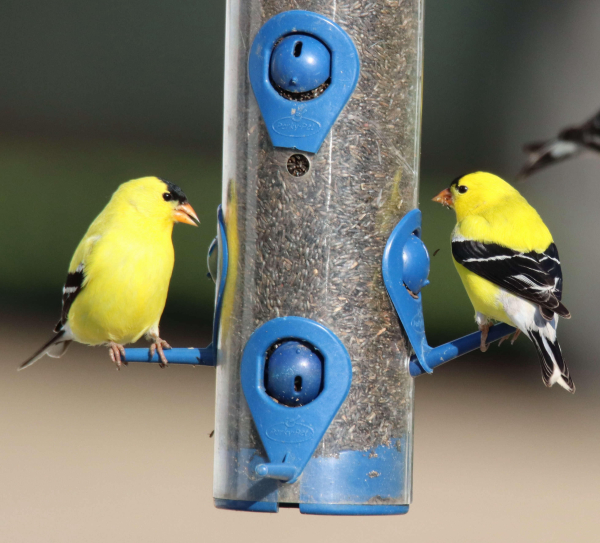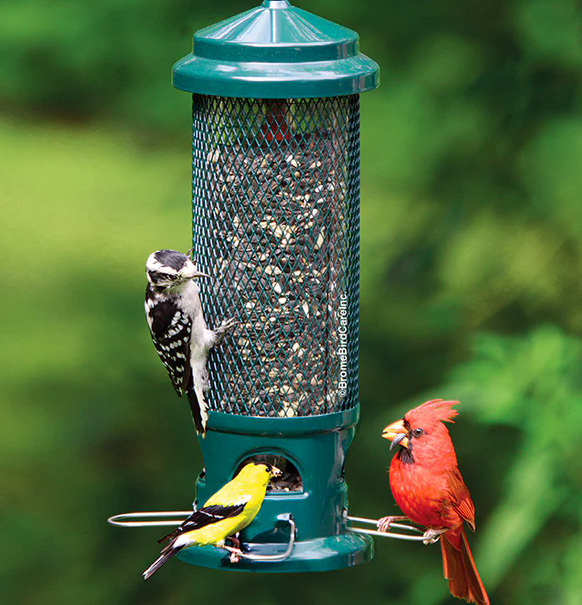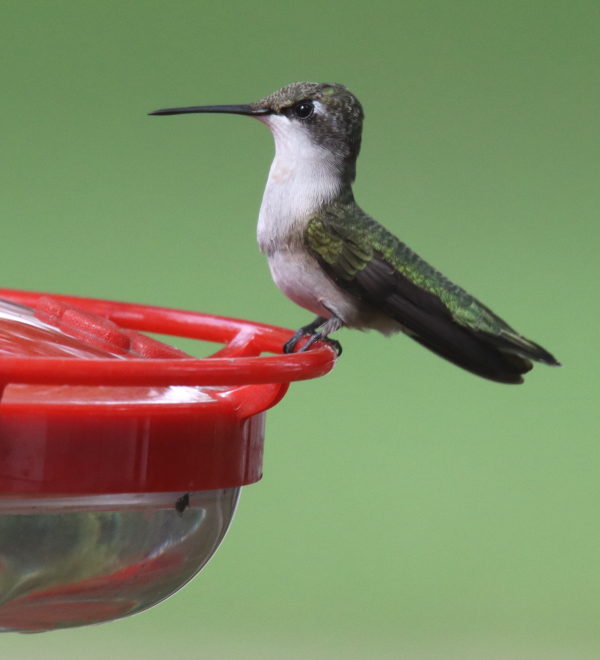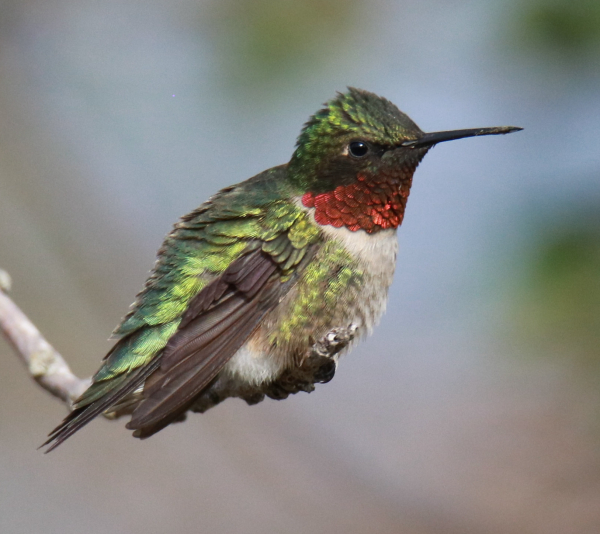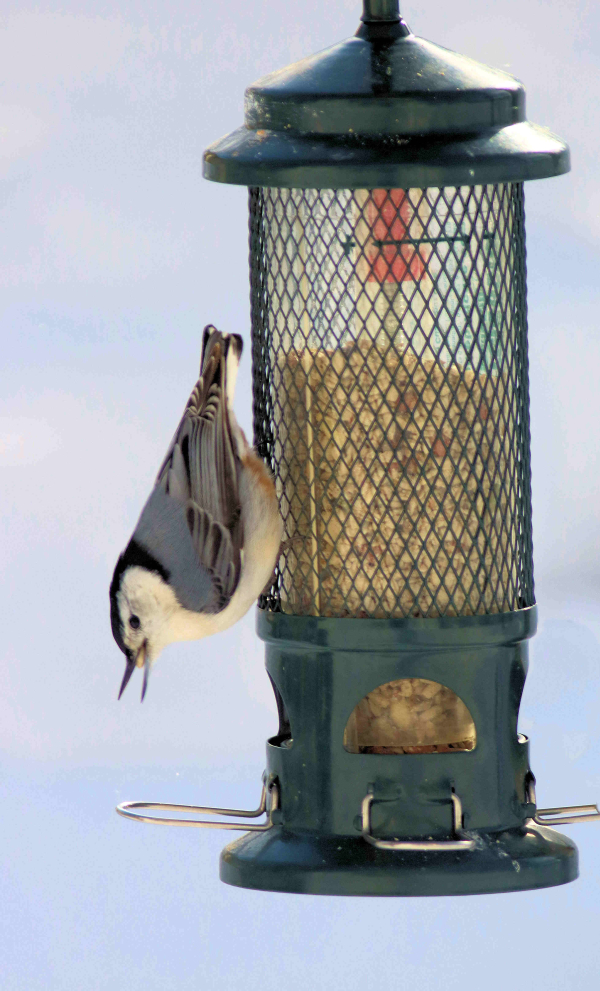Fall Finch Forecast
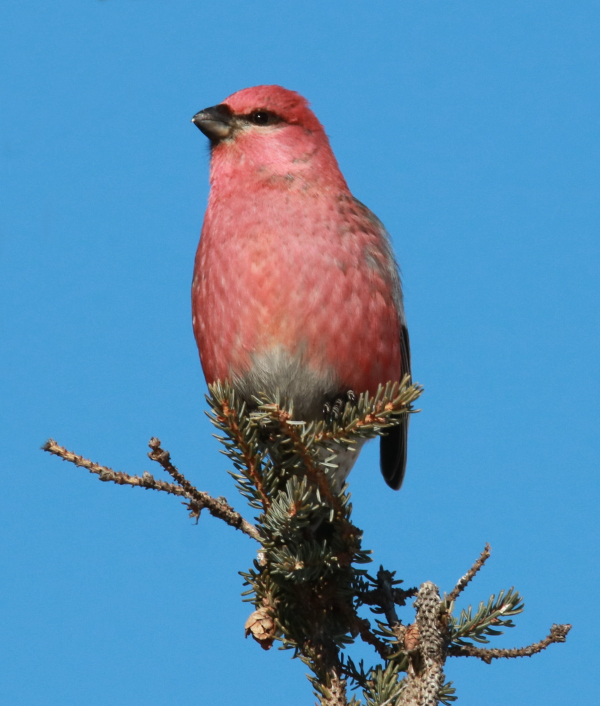
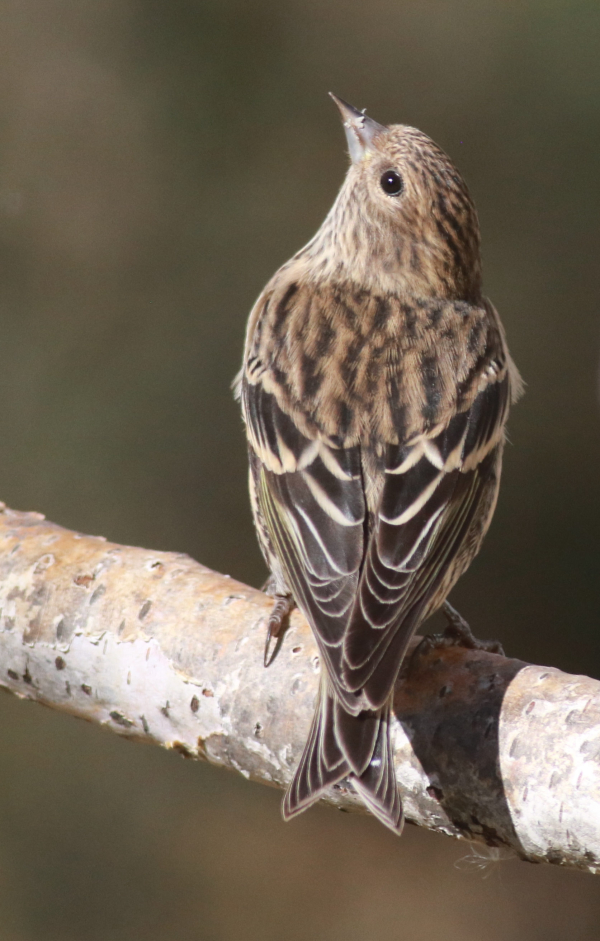
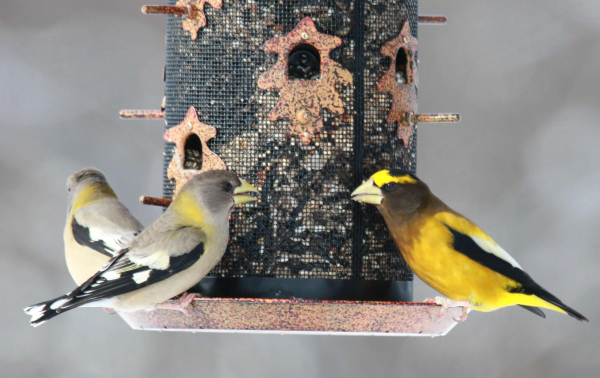
Birders are excited to learn that this fall and winter will produce an active finch migration south, which has actually already begun. The new Finch Forecast describes in impressive detail the species by species potential of seeing such exciting finches as Pine Grosbeaks and Evening Grosbeaks, White-winged Crossbills and Red Crossbills, Purple Finches, Pine Siskins, Common Redpolls, along with popular non-finches such as Red-breasted Nuthatches, Blue Jays, and Bohemian Waxwings. Many should push southward from northern forests to grace backyard feeders and wooded neighborhood settings in southern provinces and northern states soon.
The best information available about migrating finches and selected other boreal birds is provided each fall by the Finch Research Network, produced by Tyler Hoar as the annual Winter Finch Forecast. After considerable research and consultation with biologists and birders across Canada and the northern United States including Alaska, Tyler creates an exciting description of what we can expect, and here we share some of the highlights of his Winter Finch Forecast.
From eastern North America west to northwest Ontario and the Upper Midwest States, there should be a good flight year for several species. In eastern North America, there is good food production along the coastal areas of the Maritime Provinces south into New England, which should hold many finches this fall and winter. Inland from this region to habitat west of Lake Superior, pine cone and berry production is generally poor, with scattered pockets of good production.
There is a significant masting event involving spruce trees from interior northern British Columbia and Northwest Territories east to northwest Ontario, providing a bumper crop of seeds. One reporter stated it was the heaviest cone crop ever seen, with branches ready to break under the weight! This bumper seed production continues south through the Rocky Mountains and provides a good cone crop south as far as northern Arizona. Large numbers of crossbills and siskins will move into this masting region this fall and winter. For the most part, due to the winter range of the birds listed below, the following forecasts apply mainly to Ontario and adjacent provinces and states.
Pine Grosbeaks – Traditional areas in the upper Midwest states east to New England and the Maritime Provinces should see movements of Pine Grosbeaks. Flocks of Pine Grosbeaks will search for fruiting ornamental trees and feeders well-stocked with black oil sunflower seeds in rural and urban areas.
Evening Grosbeaks – This charismatic finch already appears to be on the move this fall. Its nesting population appears to be increasing in eastern Canada and west to Manitoba due to increasing outbreaks of spruce budworm, especially in northeast Ontario and Quebec. Visual counts by Tadoussac Bird Observatory staff in southern Quebec are already documenting a movement of Evening Grosbeaks, and several individuals were reported as far south as Pennsylvania and southern Ontario by mid-September. Expect Evening Grosbeaks moving into border states, southern Ontario, southern Quebec, and the Maritime Provinces this fall.
If Evening Grosbeaks repeat the big, fast-moving, long-distance flights documented during late October 2020, some birds could be expected to fly farther south in the United States than usual. At large platform feeders, Evening Grosbeaks prefer black oil sunflower seeds, and they will look for maple and ash trees holding seeds.
Red Crossbills are already quite common in eastern Massachusetts, along the coast of Maine, and in the southern Maritime Provinces. There are modest numbers in the Adirondacks, Algonquin Provincial Park, and west to the upper Great Lakes region. The heavy red spruce seed crop along the coast and localized heavy eastern white pine seed crop is driving the majority of the current distribution. Will Red Crossbills migrate down the coast to Long Island, Cape May; Delaware, and points south as they sometimes do when cone crops are depleted during winter.
White-winged Crossbills – A bumper White Spruce seed crop and ample production by other conifers in the boreal forest from northwest Ontario to northern British Columbia south through the Rocky Mountains should contain most of the White-winged Crossbills this winter. Throughout the boreal forest from Lake Superior eastward, spruce seed crops are mostly poor, with areas of patchy fair seed crops and widespread poor Tamarack seed production. Later this winter, crossbills might start wandering more as foods are depleted, and any conifer cones, even old cones, should be watched for crossbills and siskins.
Purple Finches – Early movements south have been documented for weeks already, with many Purple Finches migrating south from eastern Canada this winter. With several large spruce budworm outbreaks in the eastern boreal forest, Purple Finches appear to have benefitted from that abundant food source during the nesting season. The ash seed crop is good in many areas of the Northeast where ash trees are dying from the effects of emerald ash borers, so some Purple Finches could linger, but look for them to be most common south of the eastern boreal region and northern tier of states.
Pine Siskins – Most of the Pine Siskins in the east this fall should move southward in search of food. At backyard feeders, they prefer thistle seeds provided in a tube feeder. Many will remain in the bumper spruce seed production area in western Canada this winter. In the eastern boreal forest, there are extensive pockets that hold heavy crops of white cedar seeds that should attract some siskins this winter.
Common Redpolls – Watch for redpolls on birch trees, in weedy fields, and at bird feeders that provide thistle seeds and black oil sunflower seeds. There is potential for Common Redpolls to make a moderate to a good migration south beyond the boreal forest. Redpolls prefer birch tree seeds, but it appears birch production is poor across North America this year, while alder tree seed production across the boreal forest is average. Also, watch for Hoary Redpolls among flocks of Common Redpolls.
Red-breasted Nuthatches – This species has been moving south since July and they are expected to continue to move southward throughout fall and winter due to mostly poor cone crops in the eastern boreal forest. Red-breasted Nuthatches prefer suet and black oil seeds at feeders.
Bohemian Waxwings – Look for these beautiful waxwings in traditional areas from central Ontario east into the Maritime provinces, northern New England, and the Great Lakes states. As winter progresses and food resources dwindle, flocks of Bohemian Waxwings may be seen further south of these traditional areas. Bohemian Waxwings coming south will visit reliable annual crops of abundant buckthorn berries and urban areas with planted European mountain-ash berries and crabapples.
Blue Jays – This fall is providing a good to strong migration of Blue Jays south due to poor beechnut, hazelnut, and acorn production, except in pockets of good acorn crops scattered from Manitoba east through southern Canada and Northeast states to Pennsylvania.
Favored Finch Foods & Water
It looks like a fine fall and winter for most northern finches to make substantial inroads into southern Canada and northern states, along with Rocky Mountain areas. In short, you probably won’t even need to alter your usual fall and winter bird foods – the above list of finches and other boreal forest birds will be attracted to feeding stations that keep black oil sunflower seeds and nyjer thistle seeds well-stocked.
The potential of attracting colorful finches, grosbeaks, crossbills, redpolls, and more should keep us all on our toes with the hope that they land at our feeding station. And don’t forget the potential of providing winter water either – a heated bird bath will be attractive and well-utilized too. Good luck and enjoy the birds that activate your feeders each day.
To review the entire Finch Forecast, see https://finchnetwork.org/winter-finch-forecast-2022
Share your backyard birding experiences and photos at editorstbw2@gmail.com

